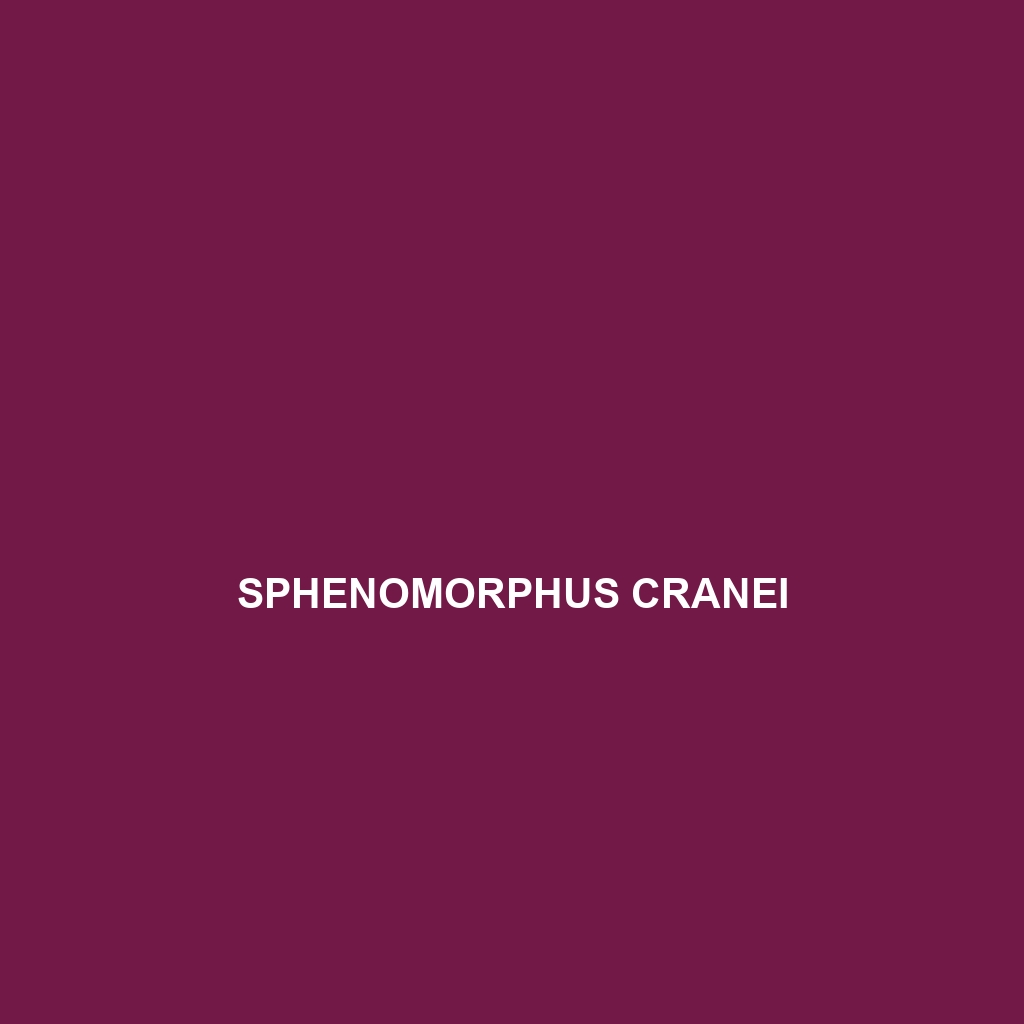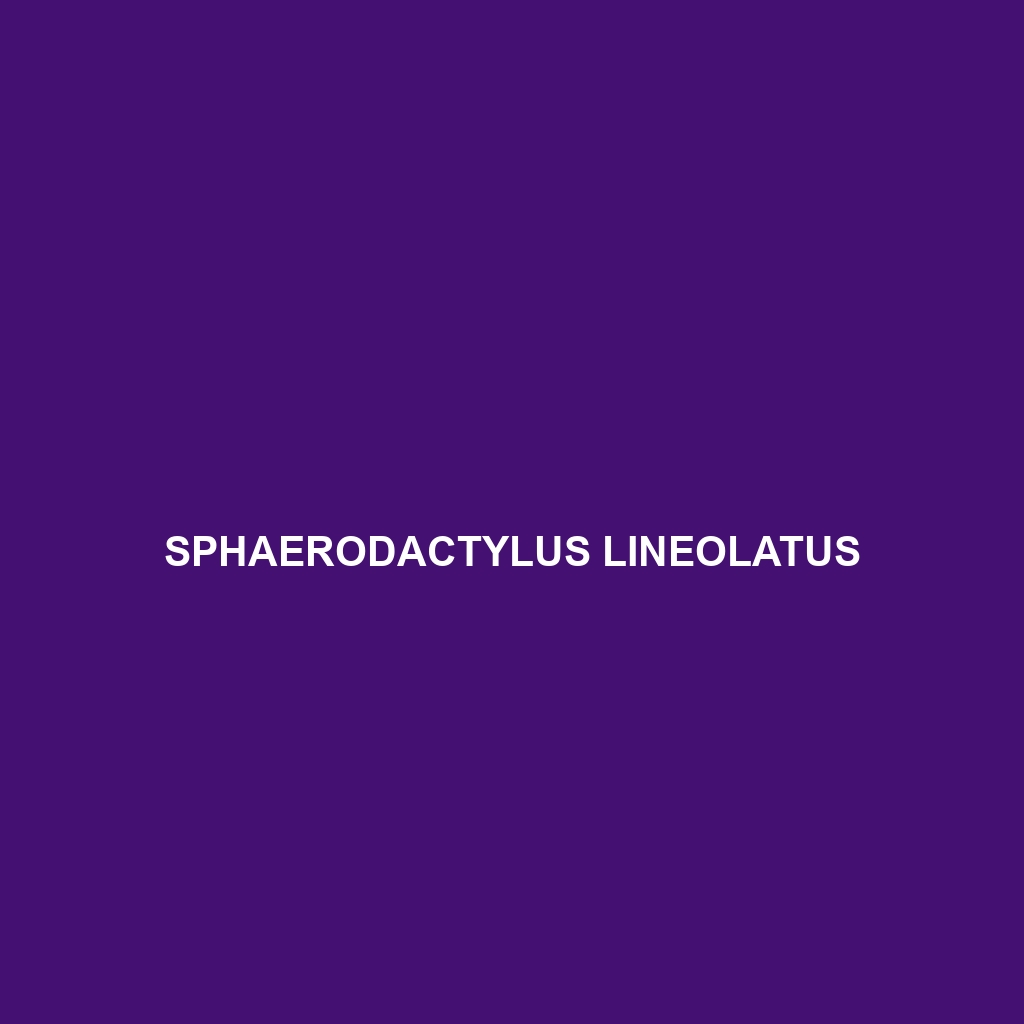Discover the Sphenomorphus forbesi, or Forbes' skink, a slender, agile lizard found in the tropical rainforests of Southeast Asia. With a length of 15 to 20 cm, it showcases smooth scales in brown or greenish-brown hues, thriving in high humidity and playing a vital role in its ecosystem as both predator and prey.
Tag: rainforest lizards
Sphenomorphus cranei
Discover the vibrant <b>Sphenomorphus cranei</b>, a striking lizard native to the rainforests of Southeast Asia. Known for its unique coloration, agile behavior, and vital role in regulating insect populations, this species thrives in humid environments and is a fascinating example of rainforest biodiversity.
Sphaerodactylus zygaena
<b>Sphaerodactylus zygaena</b>, commonly known as the Caribbean Dwarf Sphaero, is a small, slender lizard native to the rainforests of Hispaniola and Puerto Rico, characterized by its smooth, glossy skin and vibrant yellow or orange markings. Primarily nocturnal and insectivorous, this agile species plays a vital role in its ecosystem by regulating insect populations and serving as prey for larger predators.
Sphaerodactylus savagei
<b>Sphaerodactylus savagei</b>, commonly known as Savage's sphaero, is a small, nocturnal lizard native to the Caribbean rainforests, measuring 2 to 4 inches in length. With its mottled brown, green, and gray skin, this vulnerable species plays an important role in its ecosystem as an insectivore, helping to regulate insect populations and indicating a healthy habitat.
Sphaerodactylus nicholsi
<p><b>Sphaerodactylus nicholsi</b>, commonly known as Nichols' pygmy gecko, is a small, nocturnal lizard native to tropical habitats like rainforests and savannas in the Caribbean. Measuring 4-5 inches, it features a slender body with smooth, shiny scales and specialized toe pads, primarily feeding on small insects while playing a crucial role in controlling insect populations in its ecosystem.</p>
Sphaerodactylus lineolatus
<p><b>Sphaerodactylus lineolatus</b>, commonly known as the island gecko, is a small, nocturnal lizard measuring 2 to 4 inches, native to the Caribbean's rainforests and savannas. With a diet primarily composed of insects and the ability to regenerate its tail after autotomy, this adaptable species plays a vital role in maintaining the ecological balance in its habitat.</p>
Sphaerodactylus goniorhynchus
<p><b>Sphaerodactylus goniorhynchus</b>, a vulnerable species found primarily in the humid rainforests of Puerto Rico and Hispaniola, is a nocturnal, insectivorous lizard that reaches lengths of 5 to 7 centimeters. Known for its excellent camouflage and climbing abilities, this microhabitat specialist plays a crucial role in controlling insect populations and maintaining ecosystem balance.</p>
Sitana spinaecephalus
<b>Sitana spinaecephalus</b>, commonly known as the Spiny-headed Lizard, is a diurnal insectivore found in diverse habitats across the Indian subcontinent, characterized by its distinctive spiny crest, vibrant coloration, and agile behavior. This lizard plays a crucial role in its ecosystem by controlling insect populations and serving as a prey source for various predators.
Sitana spinaecephalus
<b>Sitana spinaecephalus</b>, commonly known as the Spiny-headed Lizard, is a diurnal insectivore found in diverse habitats across the Indian subcontinent, characterized by its distinctive spiny crest, vibrant coloration, and agile behavior. This lizard plays a crucial role in its ecosystem by controlling insect populations and serving as a prey source for various predators.
Pseudogekko pungkaypinit
<b>Pseudogekko pungkaypinit</b> is a medium-sized gecko native to the tropical rainforests of Southeast Asia, particularly the Philippines, characterized by its vibrant green coloration and impressive camouflage. This nocturnal insectivore exhibits unique physical traits, including adhesive toe pads for climbing, and plays an essential role in maintaining ecological balance by controlling insect populations.









